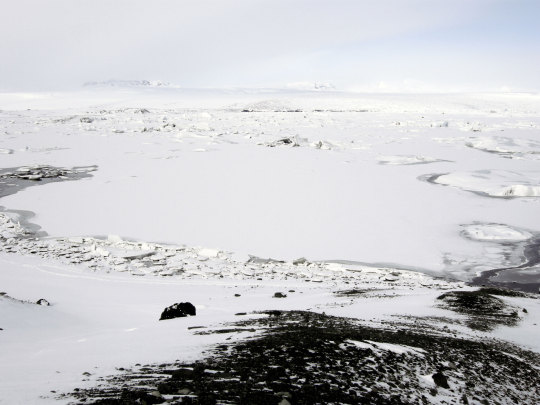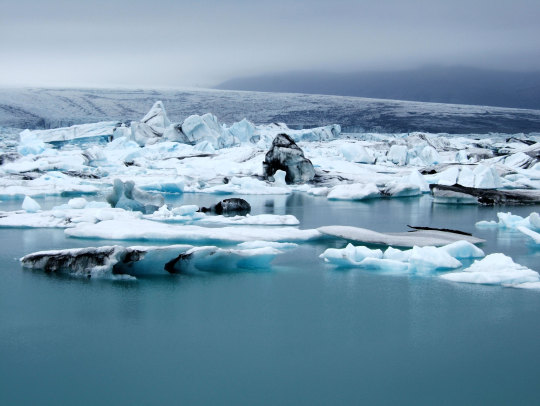#weeklyblogpost
Text
Busting Myths Vitiligo
Vitiligo is a long-term non-infectious skin condition characterized by patches of the skin losing their pigment, in other words, it impacts melanin production. Read more

#siukaphahospital#multispecialityhospital#psoriasis#psoriasisawareness#psoriasisawarenessmonth#psoriasistreatment#blogpost#weeklyblogpost#skincondition#diseases#doctors#healthcare#treatments#multispecialityservices#patients#india#assam
0 notes
Photo

Weekly Blog Post 10/19/2021
This past week in my creative studios class, I prototyped a chicken sandwich cookbook! It ended being a kind of retrospective project about my relationship with chickens sandwiches this past summer at work and how they came to be. I inserted my narrative wherever possible in between the recipes with was a new thing for me to try and synthesize. I’m used to cooking and just doing it; taking notes was new for me throughout the process. This process took me roughly 10 hours spread over two days of shopping, cooking, and photography. This project isn’t in its most ideal form but gave me a greater understanding and appreciation for what goes into these publications.
1 note
·
View note
Text
Katie Paterson, Vatnajökull (the sound of)
Katie Paterson’s installation artworks focus on human relationships and connections to both the Earth and the Planetary. She often takes recognisable objects such as pianos, disco balls and, in the case of Vatnajökull (the sound of), a telephone in order to articulate and reflect upon power relations, communications and connections between humans, nature and the planetary.

In Vatnajökull (the sound of) a live phone line was created to an Icelandic glacier, via an underwater microphone submerged in Jökulsárlón lagoon, an outlet of Vatnajökull. The number 07757001122 could be called from any telephone in any country around the world, and the listener would hear the sound of the glacier melting.

The idea was to articulate the devastating effects of the anthropocene and climate change in a more digestible, resonating and human level. So often these issues are seen as too big or too far beyond our reach as a human creating alienation and detachment on our part. Yet by encouraging real-time communication between the humans and nature it created a common language, a common story and a common understanding of how our actions as humans have such tragic implications.

In relation to our exhibition, this work is poignant as it articulates the planetary from an everyday perspective. It encourages the open mindedness, the cognitive shift and the incorporation of multiple perspectives that we attempting as part of our project. Through her multidisciplinary practice, she manages to bring the vast scale and temporal dimensions of geological and cosmological events into sharp focus, creating art that focuses less on the human and more on planetary relationships.
1 note
·
View note
Text
Ch. 8 Social Innovation
The chapter this week was hella interesting to read. And I am not saying that because it was legit four pages. The two designers who were interviewed for the topic of social innovation and working for the public good said some great words and advice for the world of design. I liked how the intro touched on designers/creators/artists essentially becoming social entrepreneurs through the work we do. “Design ignites change” highlights how effective I can be as a designer, for as many audiences/topics as I want in my future. Thinking about creating change or designing a movement is something that I want and crave in my career. I absolutely love this quote from Bob McKinnon who is interviewed at the end of the chapter: “If you want to change the world, design for one.” McKinnon discusses more on how we should “design up,” which means I need to first find who needs the help or support for solutions in certain communities/social issues. The incorrect way is to assume what people need, known as “designing down.” Great, great read.
1 note
·
View note
Text
Mass Extinction
https://michaelwang.info/The-Drowned-World
In the history of Earth there have already been five mass extinctions (that we know of) and the sixth mass extinction is believed to currently be taking place. Mass extinction is an unfathomable concept to grasp for our human-centered minds. Those who acquiesce to the era of the Anthropocene understand that the human-species has an effect on the planet, but to what means can one define the age we live in when the Earth could annihilate everything that humans have subjected to meaning?

The artist Michael Wang’s The Drowned World reminds us of the unfathomable. With his outdoor plant installation he takes us back to the carboniferous period. With the end of the Permian age, over 251 million years ago, came the greatest mass extinction known to us. Due to a multitude of natural catastrophes whereby greenhouse gases were blasted into the atmosphere, Earth became inhabitable for 96% of the existing species. In Palermo, Italy, during the Manifesta 12 biennial in 2018, one could come across the descendents of these ancient plants, sprouting up from the ruins of an old gasworks. The remains of the plants that were exterminated during “the great dying” became the sedimentary layers of coal burnt in gasworks such as the one in Palermo. The burning of this coal rereleases the gases that were once in the atmosphere during the carboniferous period. The artificial placement of these plants alongside manmade industry entwines the human narrative with the earth’s primal history.

A mass extinction goes beyond simply the extermination of the human species. It encompasses the end of most life, ranging from the tiniest of organisms to the largest of mammals. Yet this thinking is in contradiction to the acceptance of antropogenic degradation. How can we as a species have an impact on a planet whose nature has eminent impact over all? How can the offspring of organisms dating from a pre-human age live alongside the systems that are concurrently dominating their possibilities of future life?

These questions are sparked when strolling amongst the fossils and flora of Wang’s artwork. As we continue to encourage each other that we have inflicted disastrous change onto our planet, thus we have the power to undo the earth of these ‘negative’ developments, perhaps it is best that the concept of mass extinction is so difficult to grasp. With mass extinction ever looming in the horizon of our consciousness we would be stifled and incapable of creation or regeneration. To end this blog post on a (semi-)positive note, in the words of Giacomo Leopardi :
“Nothing lives that is worthy
Thy agitation, and the earth deserves not a sigh.
Our being is pain and boredom and the world is dirt - nothing more. Be calm.”

0 notes
Text
BLOG WEEK 3:
This week in the studio we prepared for the interim presentation. I finally decided to just go with wealth inequality but more specifically the immense gap between rich and poor. I wanted to focus on the statistics of the top 10% owning 60% of NZ wealth alone. So I am going to be focusing on the scale of things like building or balloons potentially. The posters I finalized as my interim ones I was kinder happy with. To be honest wasn't sure about some of them as I felt something was missing but the monopoly styled one was something different from what I had previously done. After the critique I wasn't 100% sure what to do, I felt like I wasn't happy with either the subject matter or the way I was approaching the subject, so I decided to go back to my FDPs to see how I could potentially do it better.
0 notes
Photo

Just finished this week's Small Biz tips blog post. #smallbiz #weeklyblogposts #renewedcommitment #artist #writer #entrepreneur #professionalorganizer #CamcobraDotCom
#entrepreneur#renewedcommitment#writer#smallbiz#weeklyblogposts#camcobradotcom#artist#professionalorganizer
0 notes
Text
Connect and Showcase Diversity as business
Connect & Showcase Diversity as business:
It’s really important to me, as social media and community manager for Koodzo, that we connect with bloggers who are invested in a wide array of topics. Even more so, that we also share our interests here and create content that readers can be inspired by and learn from. Since this is exactly what we encourage our bloggers to do!
Weekly blogposts start this week over at blog.Koodzo.com
#blogger#weeklyblogpost#new blog#weekly#blog posts#content distribution#humans#not automated#old school and new school#koodzo social#social media#native advertising#content marketing#2016#millenials#business#advertising#organic#native#organic exposure#all blogger#fashion blog#tech blog#health blog#car blog#travel blog#food blog
0 notes
Photo

Hey all, I am deciding to do WEEKLY written blog entry's because night to night is just too much and They will be shorter, So I'll be posting about my cosmetology journey every Friday to make them longer and say what has happened through the week! (Since I don't have school Friday - Sunday!) just thought I'd update and here's a selfie from last night before class! 🎀
#personal#selfie#me#weeklyblogpost#cosmetology#redhead#Ginger#natural#wingedeyeliner#makeuponpointtho
33 notes
·
View notes
Text
Psoriasis
Psoriasis is a condition in which skin cells build up and form scales and itchy, dry patches.
Psoriasis is thought to be an immune system problem. Triggers include infections, stress, cold, smoking, and alcohol. Even if you have severe Psoriasis Dermatologist can help you to manage flare-ups. Read more

#siukaphahospital#multispecialityhospital#psoriasis#psoriasisawareness#psoriasisawarenessmonth#psoriasistreatment#blogpost#weeklyblogpost#skincondition#diseases#doctors#healthcare#treatments#multispecialityservices#patients#india#assam
0 notes
Text
Plant Blindness, Plant Script, Plant Co-Authorship and Interspecies Dialogue
By Amy Gowen
The neglect and dismissal of flora is not only limited to scientific outlooks but extends also to social and cultural domains with planets often being reduced to just aesthetic purposes. Alarmed by the relegation of threatened floristic communities to reductionist discourse, biologists have popularised the idea of plant blindness to describe an inclination “among humans to neither notice nor value plants in the environment” (Balding and Williams 1192). As a tendency to overlook flora, to underestimate its global ecological significance, or to reduce it to an appropriable resource, plant blindness could reflect the physiological constraints of the human processing of visual information. The pervasiveness of plant blindness and the inability to recognise vegetal lives and their complexities could be one of many factors contributing to the exponential species loss and biocultural disintegration that ever more characterises the Anthropocene.
Ways in which artists have attempted to connect plants and humans once again is through plant poetry and plant literature, a technique and form that incorporates layered, planetary narratives and discourse to not only highlight the wonders of plant life, but to create an interspecies dialogue.
Research into botanical percipience can be traced back at least to Charles Darwin and Jagadish Chandra Bose. Darwin and Bose were the first to imagine and develop novel instruments to make visible the endemic semiosis of vegetal life, or what they came to term plant script. Plant script incorporated modes of interspecies dialogue between humans and plants and made visible the non-linguistic forms of communication of plants, plant-script or plant-autographs. Although forgotten for a long time, this form of collaboration and communication has opened a world of potential for creative arts to engage, evoke and elicit plant sensitivities. Rather than constructing them as objects of representation, it entails the possibility of creative exchange between plants and humans in which plant script intergrades with the production of a text. The potentials of writing practices can therefore initiate new social, biological, political and imaginative perspectives on flora. Human-plant communication can be posited as a basis for interspecies collaboration in which botanical life is an agent, participant within, and contributor to the compositional process.
Rather than passive constituents of the landscape, plants exhibit a range of self-determined behaviours, including learning, remembering, solving problems, making decisions based on prior experiences, interpreting sensory feedback in order to negotiate environments, assimilating information to enhance survival and fitness, and, even, enacting forms of altruism including care.
The plant as co-author has been seen through multiples cases of literature, including eco-fiction, speculative fiction and perhaps most effectively, plant poetry. Examples include Wright’s Five Senses (1963), Murray’s Translations from the Natural World (1992), Easter Sunday (1993) and most recently, Power’s The Overstory (2018).
Plant fiction, plant poetry and the co-authorship between plants and humans is an integral part to our project as rather than speculative reverie, pathetic fallacy or barefaced metaphorisation, plant script becomes available to us through practices of listening to, looking at, feeling, tasting, smelling and walking in plant habitats. The interspecies dialogue requires a deeper understanding between fauna and flora, a reconfiguring of our relations on this planet and to one another and a cognitive shift in perspective towards the planetary.
0 notes
Text
Becoming Planetary & Planetary Media
In what ways does the planetary become evident - wether as object, process or event? How is the planetary configured, rather than assumed and given?
As we approach our upcoming curatorial event, these apposite and provocative questions - posed by sociologist Jennifer Gabrys in the e-flux article ‘Becoming Planetary’ - echo the crux of our discussions. As we are facing deep-rooted climate, social and environmental crises, contemplating the planetary and how this perspective can be manifested is extremely relevant to us as curators. As our primary focus is to provide an awareness of the planetary, how exactly do we broach this and how can our curatorial practice enable this?
Gabrys proposes becoming planetary as a ‘way to consider how the planetary is not a uniform or fixed set of conditions, but rather signals conditions of difference, as well as collective responsibility and possibility with and through those differences’. For Gabrys, we should be striving the make being planetary ‘as praxis’. For us, this is expressed through the adoption of the planet-wary lens. Can we get our audience to undertake a cognitive shift with us and will this result in a permanent change in the way that they perceive and relate to the living planet?
Another compelling component of Gabrys’ text is the notion of the forest as a form of planetary media, in that they are the site of multi-species inhabitations, ‘protests and struggles for ways of being in the world’ and register the accumulations of the environment bestowed upon it by nature and human actions. Gabrys notes the forests ability to transform human-planetary relations as ‘it at once resists a universal and singular view, while also bringing into focus a multiplicity of subjects and inhabitations’.
Perhaps the most pressing question she poses for us in relation to the forest is, ‘how does this gaze from within planetary inhabitations generate multiple modes of praxis?’. What role does the category of human play and the category of forest play in this eco-system and this discussion?In what way can we ask our audience to inhabit these categories and the planet-wary lens in a non-superficial manner? How can we together, across these different categories, consider and challenge the inequalities and crises of the current system such as climate change? We are excited to contemplate the manner in which we can fully embrace and demonstrate this dialogue in our upcoming event.

0 notes
Text
BLOG WEEK 2:
This week we looked into how posters work, through different elements like the use of cut and paste, scale, double meaning etc. In the studio for Monday, we had to create an illustration of a phrase. This was also to be our theme for the poster due that evening. I chose what must come up must go down, to mean that made me think of balloon hence the use of balloons for the subject matter. I’m still deciding between overall themes but I feel that I am heading towards wealth inequality due to the sheer scale it is of a problem. For Thursday we look at common poster themes like anti-war or human rights for example. In the studio, we all brought in an article based around our theme (I went with a wealth one but still not 100% on it) and we were to analyse and create concepts based on the information in it. This was also our theme for the poster due that evening. I went out of my comfort zone, to be honest, an attempted the bread design as a lot of people I knew was doing a slice of cake and I wanted something else which every day gets sliced and divided up so I used bread. I think it went well.
0 notes
Text
The Life Plus Hospital
You can control Gestational Diabetes during Pregnancy, with regular checkups, diet, and a healthy routine with no worry of complications for you and your child. Read more...

https://bit.ly/3vtw7Nf#thelifeplushospital #lifeplus #multispecialityhospital #gestationaldiabetes #gestationaldiabetesdiet #gestationaldiabetesmeal #blogpost #weeklyblogpost #gestationaldiabetessupport #gestationaldiabetesfriendly #gestationaldiabetesbaby #gestationaldiabetestest #pregnancycare #gynecologists #pregnant #nammabengluru #bangalore #indiranagar
0 notes
Text
Anatomy of PCOD Symptoms Causes and Diet
Polycystic Ovarian Disease is among the most common complaints gynecologists get. Reports have stated that almost 10% of the women in the world are suffering from PCOD. Read more

#siukaphahospital#multispecialityhospital#PCOD#PCODtreatment#blogpost#weeklyblogpost#skincondition#diseases#doctors#healthcare#treatments#multispecialityservices#patients#india#assam
0 notes
Text
Katie Paterson, Vatnajökull (the sound of)
Katie Paterson’s installation artworks focus on human relationships and connections to both the Earth and the Planetary. She often takes recognisable objects such as pianos, disco balls and, in the case of Vatnajökull (the sound of), a telephone in order to articulate and reflect upon power relations, communications and connections between humans, nature and the planetary.

Image from http://katiepaterson.org/
In Vatnajökull (the sound of) a live phone line was created to an Icelandic glacier, via an underwater microphone submerged in Jökulsárlón lagoon, an outlet of Vatnajökull. The number 07757001122 could be called from any telephone in any country around the world, and the listener would hear the sound of the glacier melting.

Image from http://katiepaterson.org/
The idea was to articulate the devastating effects of the anthropocene and climate change in a more digestible, resonating and human level. So often these issues are seen as too big or too far beyond our reach as a human creating alienation and detachment on our part. Yet by encouraging real-time communication between the humans and nature it created a common language, a common story and a common understanding of how our actions as humans have such tragic implications.

Image from http://katiepaterson.org/
In relation to our exhibition, this work is poignant as it articulates the planetary from an everyday perspective. It encourages the open mindedness, the cognitive shift and the incorporation of multiple perspectives that we attempting as part of our project. Through her multidisciplinary practice, she manages to bring the vast scale and temporal dimensions of geological and cosmological events into sharp focus, creating art that focuses less on the human and more on planetary relationships.
For further information and resources: http://katiepaterson.org/
0 notes